Before we get going – can you please tell people who might not be familiar with kinesiology taping – what it is and how it works?
Equine Kinesiology Taping is a non-invasive therapeutic technique that involves applying specialised elastic tape to the horse’s coat with different degrees of stretch to achieve specific goals.
When the tape is applied, it recoils and gently lifts the horse’s hair and skin, creating space between the skin and the tissues underneath which promotes improved blood and lymphatic circulation. This enhanced circulation contributes to better tissue oxygenation, nutrient supply, and waste removal, aiding in reducing inflammation and supporting healing.
Kinesiology taping also works at a neurophysiological level by stimulating sensory receptors in the horse’s skin, muscles, and fascia. This stimulation influences the sensory input received by the nervous system, triggering neurophysiological responses. It helps adjust the perception of pain, improves the horse’s body position awareness, and enhances movement control. The result is pain relief, improved proprioception and movement, and enhanced healing for the horse.
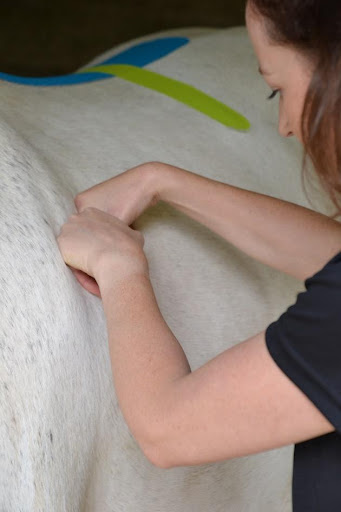
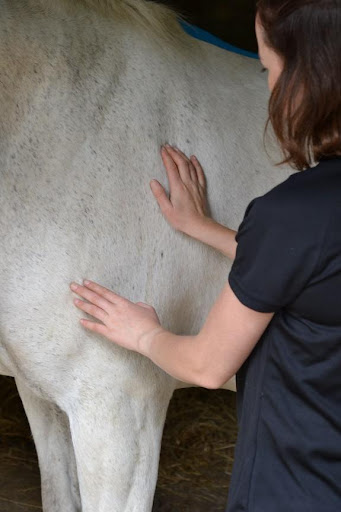
I myself have actually used this tape on my own body for tennis elbow and I was astounded at the difference it made almost instantly – I think with a lot of “modern remedies” I would imagine that people are sceptical about them working – but I can 100% vouch that this did for me, so don’t see why it wouldn’t on a horse! Is this something you find people are doubtful about – or are they actually receptive about kinesiology?
It’s great to hear that you had positive results with kinesiology taping for yourself!
I understand that people may have doubts or reservations about complementary therapies like kinesiology taping. However, I have found that many horse owners and riders are receptive and open-minded about kinesiology taping when they learn about it and see its potential benefits. I find when people are unfamiliar with kinesiology taping, they tend to have questions, but open communication, education and sharing experiences can help address any doubts or uncertainties. People are often pleasantly surprised and intrigued by the wide range of conditions that kinesiology tape can benefit, and what a valuable tool it can be in enhancing equine care and optimising performance.
Who are your clients? Are we looking at grassroot level horses, or professional athletes?
I work with a range of clients, from grassroots to professional athletes. My clients compete and ride for pleasure in showjumping, dressage, polocrosse, endurance, TREC and showing to name a few and include racehorses to riding horses, working stallions, happy hackers, children’s ponies, senior horses and riding school ponies. There is a real variety in the horses that I have had the opportunity to work with so far, which I love. The horses range from 3 to 30 years old, working to retired, Irish Sport Horses to Belgian Warmbloods, thoroughbreds to miniature ponies, cobs to Connemaras, and even a Spanish Mustang.
Can you tell us – what kinesiology tape can be used for and how often it should be used? Are there any negative effects of say, over using the tape, or leaving it on too long?
Kinesiology taping can be used for a variety of issues in horses including tense, weak or overdeveloped muscles, myofascial restrictions, postural imbalances, tendon and ligament injuries, swelling, scar tissue, joint instability and pain. Some specific examples of conditions for which kinesiology taping can be beneficial include sacroiliac pain, overriding dorsal spinous processes, aka kissing spines, arthritis or joint inflammation, sore or tight back muscles, poll pain, neck stiffness, upward fixation of the patella, aka locking stifle, and oedema including ‘stocking-up’, amongst many others.
Kinesiology taping has many beneficial effects; it relieves pain, improves circulation, muscle function and proprioception, reduces muscle and myofascial tension, inflammation and scar tissue, provides support and stability, and corrects postural and muscular imbalances. Kinesiology taping can help prevent injuries, as well as help horses recover from injuries. It can improve performance, and enhance overall health and wellbeing.
The frequency of equine kinesiology taping can vary depending on several factors, including the specific condition being addressed, the horse’s response to the tape, and the goals of the application. Generally, kinesiology tape is applied for a period of three to five days, and then it is reassessed to determine if reapplication is necessary. In cases of chronic conditions, such as ongoing muscle imbalances or joint instability, kinesiology tape may be applied on a more regular basis. An appropriately qualified equine therapist will be able to assess the individual horse and determine the appropriate timing and frequency for application.
Equine kinesiology taping is generally considered safe when applied correctly. There are some contraindications for kinesiology taping, including open wounds, skin diseases and irritations, fever, pregnancy, malignant tumours and unexplained or undiagnosed lameness. If a horse experiences a skin reaction to the adhesive in the tape, it should be removed, and alternative options explored. Prolonged or excessive use of kinesiology tape could potentially cause skin irritation or muscle dependency. Improper application could lead to ineffective results or even potential harm. It is recommended to get proper training or consult with a qualified professional to ensure accurate application and to achieve the best possible results.
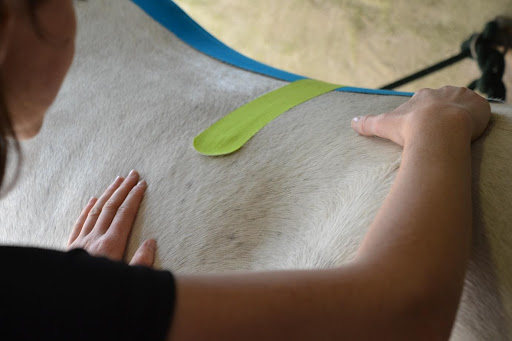
How did you become interested in kinesiology taping?
I first discovered equine kinesiology taping when I was studying Equine Integrative Support Therapies at Equi-Ed in Wexford. It was mentioned as a supportive therapy to manual therapy for various conditions and really sparked my interest. I signed up for the beginner k-taping course for horse owners first. After completing that course and witnessing the effects of kinesiology taping with my own eyes, I knew I wanted to add it to my toolbox as an equine physical therapist. From there, I went on to do the professional Equine Kinesiology Taping CPD course with Equi-Ed.
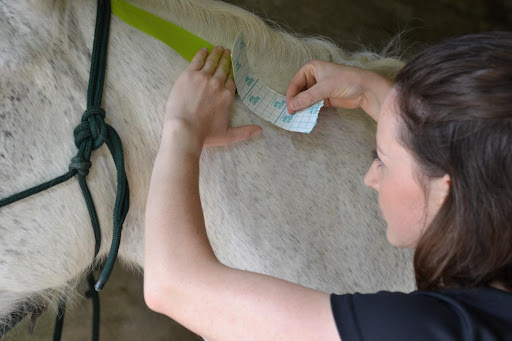
Do you offer other equine therapies – if so, can you give us a brief outline of these?
As well as kinesiology taping, I offer myofascial release therapy, massage therapy, lymphatic drainage therapy and red and infrared light therapy.
As an equine physical therapist, I specialise mainly in myofascial release, which is a hands-on technique that involves applying gentle sustained pressure and stretching to the horse’s fascia and muscles to release tension and restrictions. In my sessions, I use a combination of myofascial release and massage techniques to stimulate beneficial physiological effects and support the body to heal and maintain itself optimally. Kinesiology taping is most effective when used in combination with other therapies, particularly manual therapies, so I mainly offer it as an add-on to my therapy sessions.
As well as therapeutic and remedial massage, I also offer pre-event and post-event massages. Pre-event massage is performed before competitions or intense athletic activity to warm up the muscles, prepare the horse, optimise performance and minimise injuries. Post-event massage is done after competitions to aid in recovery, reduce muscle soreness and promote relaxation.
Lymphatic drainage therapy is a gentle manual therapy technique that focuses on stimulating the lymphatic system to encourage lymph flow and reduce swelling and inflammation. Red and infrared light therapy uses specific wavelengths of light to stimulate cellular activity and promote tissue healing. It helps to reduce inflammation, relieve pain, and improve tissue repair in muscles, tendons, and ligaments.
If you would like to discuss your horse’s specific needs or book an appointment, feel free to get in touch with me on 087 0641074 or equinetherapywithmuriel@gmail.com. You’ll also find me on Instagram and Facebook @equinetherapywithmuriel.
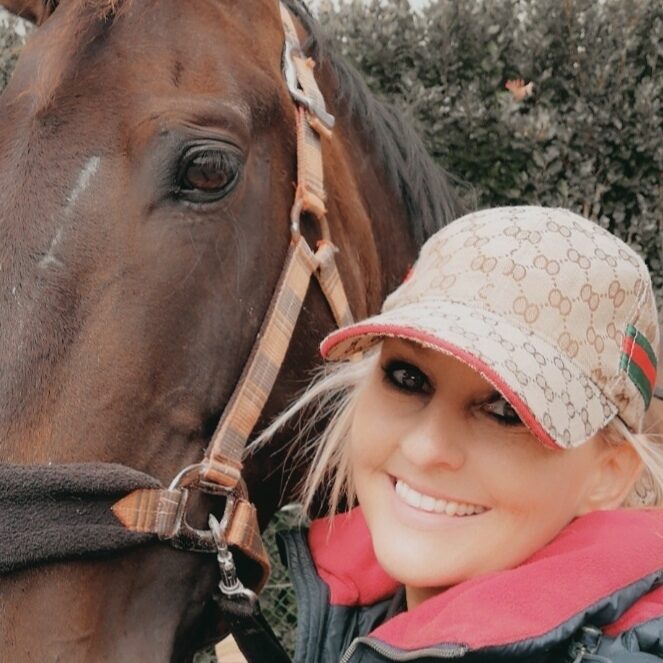

Share
Your subscription is 100% Free for our first year, No credit card details required.
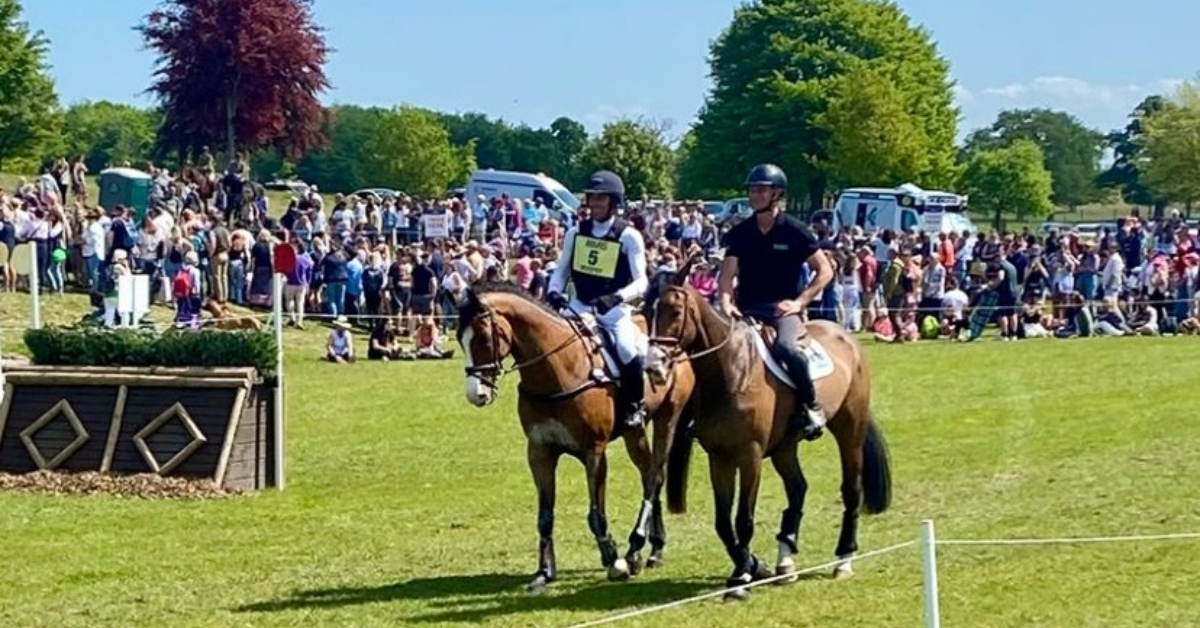
There are few sporting events that live up to the hype. Wimbledon? Too many strawberries. Cheltenham? Too many suits. But

British Veterinary Association publishes full response to Competition and Markets Authority’s proposed remedies for veterinary market for household pets. The
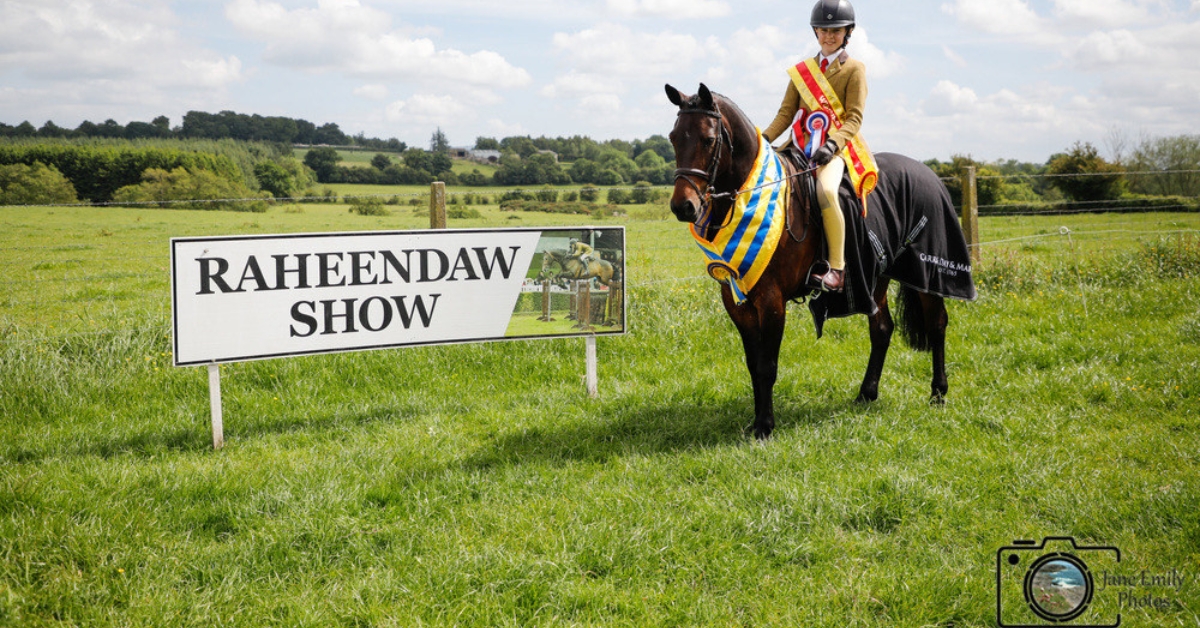
Sunday 1st June – Raheendaw, Rathvilly, Co. Carlow The Raheendaw Horse & Pony Show returns this weekend with a packed